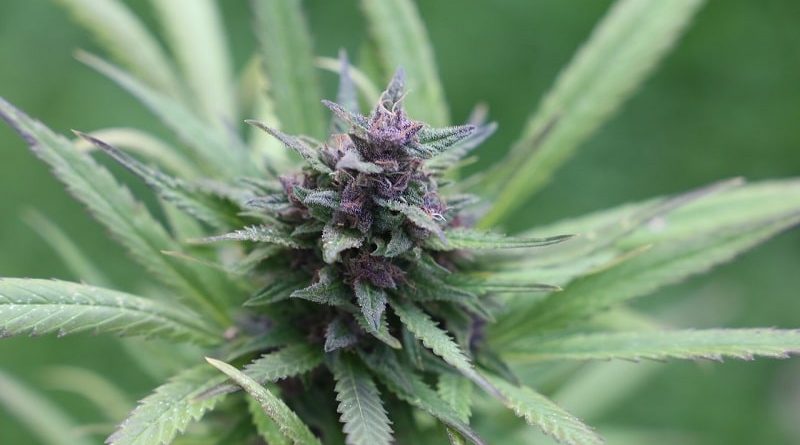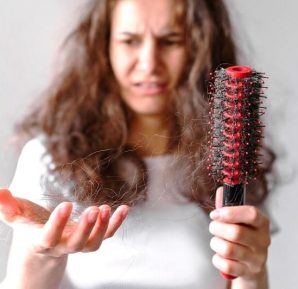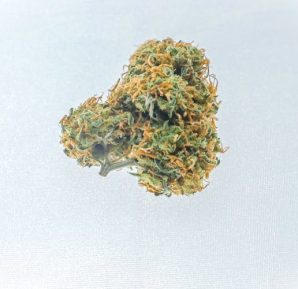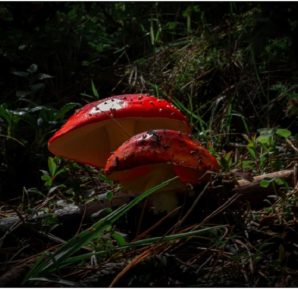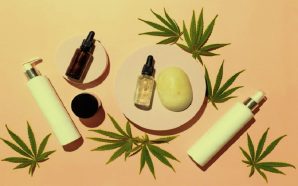Growing CBD Autoflowers will definitely gain in popularity in the coming years because more and more people use CBD to treat their symptoms or incorporate the substance into their lifestyle and wellness regime. At the same time, cultivating your own medicine in a natural, organic way allows you to get a product of consistent quality and at a fraction of cost compared to when you buy CBD either locally or online.
Who Chooses Growing CBD Autoflowers?
There seem to be two types of horticulturalists that grow CBD Autoflowers:
- Those who still want to get high from smoking buds, but also enhance the psychoactive effect with therapeutic benefits of CBD,
- People who avoid getting high, but need pure CBD to treat their symptoms and conditions.
Respectively, there are roughly two types of CBD cultivars that cater to one group or the other.
1:1 CBD Autoflowers
The first type is CBD Autoflowers with an approximately 1:1 THC-to-CBD ratio. The exact cannabinoid profile may vary from plant to plant and can range from as low as 4% THC and 4% CBD to as high as 10&10 percent in some extreme cases. (Btw, the overall cannabinoid content of 20% of the mass of dried flowers appears to be the threshold that few cultivars pass.)
As an example of this kind of genetics, we have chosen—by way of an example—CBD 1.1 (aka CBD Crack) by FastBuds. This variety contains 7% of each of the two major cannabinoids.
The effect depends on your tolerance level, but there are some common features described by virtually every smoker.
The initial THC hit is only very mild and gets further modulated by the presence of CBD which takes the edge off the high, leaves the head clear, and prevents paranoia and panic attacks. It is followed very soon by a CBD wave that brings mild relaxation, relieves pain, and makes you calm and focused. This type of effect is very versatile, meaning suitable for any time of day and compatible with virtually any activity.
Naturally, the effect can be controlled with dosages and (if you use a vaporizer) with temperature settings. See more of this below.
CBD Autos With Less Than 1% THC
An example of this type of high CBD autos is CBD 20.1 (also by FastBuds) whose cannabinoid content is rated at 0.3–0.8% THC and 10.0–20.0% CBD.
Buds like this, though they look and smell just like regular marijuana, produce hardly any psychoactive effects, and can be smoked for the same reason a patient would take an oral CBD medicine. These flowers can also be easily processed into any digestible form, be it concentrates, cannabutter, CBD-infused oils, and edibles, etc. One can also make products for topical use.
Usually, high CBD buds are meant to relieve anxiety and stress, relax muscles, and help with various pains and aches as well as seizures. Since the effect of smoking lasts for a limited span of time, it’s more convenient to medicate yourself with a vaporizer rather than have several smoking sessions throughout the day.
Besides the symptom relief, users report a few mild mood-altering effects. You may feel a bit of light psychoactivity settling behind your eyes for several hours or light sedation that—though not sleep-inducing per se—can make you relaxed enough in your mind and body to cause sleepiness.
Vaporizing a CBD Autoflower
While most medical users will, no doubt, make cannabutter, Rick Simpson oil, CBD drops, or other tinctures out of their flowers, some prefer to use a vaporizer. Luckily, we have found excellent notes by a patient who has grown CBD Crack. He described the effects when vaped at different temperatures:
- 160°C (320°F). A very clear-headed high, a mild relaxation of both ‘body and soul’.
- 180°C (356°F). Slight mental static noise, not as clear as vaping at 160°C, a couch-lock, pain relief, relaxation of neck and shoulders, sleepiness.
- 210°C (410°F). A heavy body high, couch-lock, sedation, closed-eye visuals (fractals and flowers).
Growing CBD Autoflowers
If you analyze the data available on GrowDiaries—the world’s largest online community of weed growers—a disproportionate number of CBD strains are cultivated outdoors.
It may be that many habitual smokers/growers refuse to waste precious indoor resources, such as space, light, and water, on a high CBD strain. Or, alternatively, the reason may be that CBD-rich varieties attract medical patients who have never thought of cultivating recreational strains but are eager to try and grow a medicinal one.
For the latter category, growing CBD Autoflowers presents a unique opportunity because they don’t need to invest in sophisticated and expensive indoor equipment (with a correspondingly steep learning curve). Rather, they can grow a CBD-rich strain in their backyard—the same way they would grow any traditional crop.
And compared to ‘normal’ cannabis plants (those that react to the relative length of days and nights and mature only in fall), Autoflowers need only two or three months for the whole seed-to-harvest cycle. This means that growing CBD Autoflowers is possible in virtually any climate. A gardener has an opportunity to choose ANY 2-3 months of the year when conditions for cannabis are optimal.
For this reason, we are going to describe the particulars of growing a CBD Autoflower in an outdoor environment.
The Yield Potential of CBD Autoflowers
Let’s start with some numbers.
Out of the 29 grows we analyzed, CBD Crack yielded from 11 to 451 grams per plant, with an average yield of 90g, or over 3 ounces, per plant.
For CBD 20.1, there are only 10 finished growing reports, with results varying from 6 to 55 grams per plant and an average yield of 33 grams (over 1 ounce) per plant. With CBD content rated at 10–20%, one plant brings on average 3.3–6.6 grams of pure CBD.
By the way, the glaring difference in yields between the two strains can be best explained by the fact that most of those who grow a non-THC variety are casual gardeners, totally unfamiliar with the basics of cannabis cultivation.
What follows are some remarks on cultivating a CBD-rich auto outdoors meant for first-time growers only. Those who run an indoor garden may rest assured that there is absolutely no difference in growing a CBD auto compared to regular high THC genetics.
Germination and Seedling Stage
We suggest using the most basic method of germinating your CBD seeds between wet paper towels. Once the seeds have shown the root (in 12-36 hours or longer in some cases) put them ¼ inch deep into a store-bought soil mix that can be further amended with 20% perlite.
If you plan to grow your CBD plants in containers (10 to 20 liters, or 3-6 gallons, should be just fine), put them straight into the final ones. If your plan is to grow them in beds, let them spend their first two weeks in party cups filled with a mix described above.
You’ll probably need no nutrients at this stage.
Transplanting and the Vegetative Stage
Any transplants should be performed BEFORE the Autoflower has entered the budding stage. Usually, this transition happens at 3-4 weeks from sprouts but can be delayed to weeks 5 or 6. So plan the moment to transplant accordingly.
When transplanting into containers/planters, use the soil/perlite mix as described above. When growing in beds, regular topsoil should do just fine. The choice of pots vs. beds is tricky. Pots can be moved around (e.g. when it’s too cold or too hot), but plants growing in beds are bigger and show more resistance to elements. They usually will need fewer additional nutrients or none at all.
We suggest letting your Autoflowers grow naturally if you’re a novice gardener. No canopy management/training is really necessary for your plants to flourish. On the other hand, excessive training or too invasive methods may stress a plant and diminish yields.
You may give your cannabis some nitrogen-rich plant food, but at ¼ or ½ strength, the manufacturer recommends. Autoflowers are usually light feeders.
As for watering (at any stage), the roots of cannabis prefer long intervals (dry spells) before watering because this gives them a chance to breathe. It’s very important for plants’ health. So water when your container feels light. Initially, this may be every 3 to 4 days, and, when the plants are big, they’ll require water once a day.
The Flowering Stage
During the flowering stage, your plants will require all the sun they can get, so choose a sunny spot. Just make sure to protect containers from direct sunlight because roots don’t like high temperatures. You should mulch your beds with grass clippings or something else to protect the root system from extreme temps.
At this stage, switch to the nutrients that have a lot of phosphorus (P) and potassium (K) instead of nitrogen (N). Just like in the vegetative stage, avoid overfeeding.
When the buds get bulky, protect them from excessive moisture/rain or too low temperatures. Otherwise, you can run into issues with mold.
Harvest and Drying/Curing
The whole cycle of an Autoflower strain takes usually 10-11 weeks but can be as short as 7-8 weeks or as long as 14-16 weeks in some rare cases.
The best way to tell that your buds are ready is to look through a hand microscope at trichomes (tiny glands on leaves and calyxes) which give buds their ‘frosty’ appearance. If trichomes look milky with some amber ones in the mix, you can start to harvest.
Alternatively, look at the pistils (female hairs) on buds. If they are white, it’s too early to cut down your plants. When pistils get dry and brown, this means the buds are more or less mature.
After harvest, you should trim your buds on branches and hang them to dry for some 5-7 days in a dark place. Again beware of moisture and mold. When a branch snaps if you try to bend it, you can remove buds from branches and put them into mason jars to ‘cure’.
Curing means slowly removing the remainder of moisture. To do this, open the jars a couple of times a day to ‘burp’. Curing may take 2-3 weeks after which the buds are ready to smoke, vape, or make edibles with.
Final Thoughts
Growing CBD Autoflowers can be an easy and effective way of providing yourself with the necessary amounts of CBD of medical-grade quality. It is not that different from cultivating any other type of weed, and even a beginner can grow them, especially outdoors.




